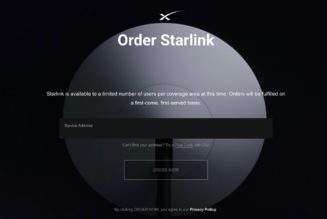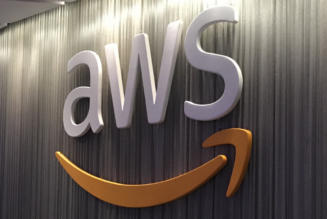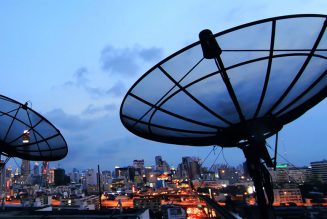The conversation around which is the better technology between hard disk and flash storage has been going on for years. In the data storage arena, flash arrays have been thriving, with no evidence this will slow down at any time. Hard disk drives (HDDs), on the other hand, which have been around for a lot longer are definitely seeing a slow decline in today’s technology landscape.
There was a time when hard disk storage won on price alone, as flash arrays were considered extremely expensive, and there is a limit to the amount of storage any business can afford. The largest enterprises that needed a lot of capacity often went the HDD route, as these solutions were far easier on the pocket.
“However, this is no longer the case. As flash technology has matured, prices have plummeted, and there is little to no benefit in opting to go the HDD route,” says Fred Saayman, Huawei Business Unit: Executive, at Pinnacle ICT, SA’s leading local ICT distributor.
According to him, although HDD and All-Flash can work together in a hybrid storage setup, even hybrid solutions are losing their appeal as All-Flash becomes increasingly affordable, more innovative, and offers a slew of benefits that HDD setups simply can’t hope to compete with.
“There’s little doubt that flash is the most popular storage choice today, as it comes out on top in terms of performance in the data centre,” adds Saayman. “Traditional flash data storage has the ability to perform up to three orders of magnitude faster than HDD storage, and in addition, has up to two orders of magnitude increased reliability, which is why flash is the natural choice when it comes to performance or critical workloads.”
Saayman says some organisations might ask themselves if there’s any point in using All-Flash storage for important, but not business-critical workloads. “There is. Today we are seeing All-Flash being used for all workloads, as well as physical and virtual machines. The truth is that although there is an ongoing perception that All-Flash is simply too expensive for non-mission-critical workloads, in reality, it isn’t.”
While HDD storage systems that employ small form factor drives might be technically less expensive than All-Flash, this is only the case if the purchase price alone is taken into account, which is usually based on the number of rands per gigabyte. However, it doesn’t factor in, or take into account, the cost of maintenance, storage software services, availability power, cooling, floor space, rack space, maintenance, reliability, and serviceability. “Once you add these elements into the equation, you will get a far more accurate idea of the actual cost, which is based on a more realistic set of factors.”
He draws an analogy to buying a house. “One house might be physically cheaper to buy than another, but there are costs such as maintenance, insurance, security and the garden that need to be considered too. In this way, with storage, when you look at the real cost of rands per gigabyte, a far more realistic picture emerges.”
Firstly, Saayman says with All-Flash, companies benefit from lower software licensing costs. “Not only is cutting the number of servers the organisation needs to purchase a massive plus, but the true savings come in when you don’t need to license costly software on those servers. All-Flash usually takes the bundling route, and includes array software in the cost of the system.”
Then, he says, there’s the question of reduced hardware needs. “Workloads can be supported with far fewer All-Flash arrays in comparison to HDDs. In fact, this number could be up to 90% fewer, and at the same time, application performance is greatly enhanced by moving workloads from HDD to All-Flash. Moreover, the business can then redeploy freed-up servers to other areas where they might be needed.”
In terms of power usage and floor space requirements between the two, he says it naturally follows that less physical hardware means less power needed, which translates into energy and actual floor space savings. “Savings companies can realise by going the All-Flash route can reach hundreds of thousands of rands in a few years. In addition, All-Flash systems usually need less than half a rack, in comparison to any HDD-based setup.”
All-Flash systems also come with lower administration costs, Saayman adds. “In this way, companies can dramatically lower the time their IT teams spend tackling performance complaints and tuning systems. All-Flash automates the mundane and onerous administrative tasks for simplicity and ease-of-use. It’s critical to grasp the impact these costs can not only have on workforce productivity but to control and to the response times, which ultimately equate to a healthier bottom line.”
Another benefit, he says, is that it is incredibly rare for an enterprise All-Flash system to completely fail because these drives are always overprovisioned. “Overprovisioning on the drive enables individual NAND cells or P/E blocks to fail without reducing the total available capacity, a feature that doesn’t exist in HDD setups.”
All-Flash storage also delivers a more reliable and consistent quality of service to the organisations, usually offering 99.9% availability. HDDs, he says, on the other hand, are the personification of inconsistency, and rarely offer availability in the top percentile.
This is particularly true when you consider the state-of-the-art hardware platform, reliable SmartMatrix architecture, five intelligent chips and the FlashLink intelligent algorithm, that the Huawei OceanStor Dorado V6 boasts. “It is also the first complete end-to-end storage series that is compatible with NVMe (Non-Volatile Memory Express) architecture, and offers unbeatable performance with up to 20 million input/output operations per second and does this with unmatched precision.
The OceanStor Dorado can efficiently avoid any service interruption, featuring fault detection systems that guarantee that services are never affected and that no waiting time occurs during updates.
“The system also features intelligent and personalised device training, as well as an eService platform that has the ability to manage an effective lifecycle, right through from resource provisioning to fault detection and identification,” he explains.
In today’s data-hungry world, Huawei’s OceanStor Dorado V6 All-Flash storage system meets the storage requirements of any large enterprises, across every sector. “If you consider that storage is a critical part of the any enterprise’s IT infrastructure as well as its underlying applications, and understand that more rapid, reliable, available and consistent storage means faster time to market in terms of development, All-Flash would still be cheaper, even if it cost twice the price, Saayman concludes.
Staff writer











